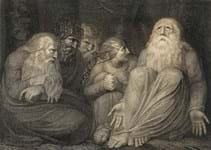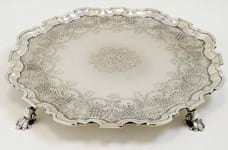The auction record for the Ayr-born studio potter Waistel Cooper (1921-2003) was broken twice in eight days in November.
First up at the Maak (20% buyer’s premium) online sale of Modern & Contemporary Ceramics closing on November 19 was a 9in (23cm) flared stoneware bottle vase with dry brown surface over a cream glaze.
Dated by the auction house to c.1985, it came for sale from a private collection in Cornwall with a guide of £400-600 but received 35 bids before hammering at £2000.
This new benchmark was short-lived. At Adam Partridge (20% buyer’s premium) in Macclesfield on November 27 was an equally sophisticated 14in (36cm) lugged stoneware vessel with textured iron surface and a cream glaze with iron flecks to the rim. It was guided at a modest £250-350, but took £3500.
Distinct eras
Waistel Cooper ceramics tend to be categorised according to four distinct eras that reflected his place of work: Iceland (where he first started working in clay from 1946- 50), Porlock (1950-57), the nearby Culbone estate (he lived in the relative isolation of Keeper’s Lodge from 1957-82) and latterly Penzance.
While exhibiting regularly in the 1950s (a solo show at Henry Rothschild’s Primavera in 1955 and the seminal British Artist Craftsmen exhibition that toured the US in 1959), it was in the 1960s that he really found his stride, rejecting utilitarianism in favour of rough unglazed textures and pure form.
Typically, it is the Culbone-era pieces, informed by the earthy tones of the ancient Somerset forest and the volcanic landscapes of Iceland, that are the most desirable wares.
Minimalist style
The buyer of the £3500 vase was Lynton, Devon, dealer Tim Williams whose inaugural exhibition at his new gallery in August was devoted to Waistel Cooper. He dated the piece to the late 1960s or early 1970s.
It owes much to the minimalist, European-centred work of Hans Coper rather than the Leach tradition. However, Cooper’s reputation as an imitator is, says Williams, ill-placed.
“I think people are starting to re-discover the context of Waistel Cooper in 20th century art,” he said. “For the past 20-odd years he has been dismissed unjustly as a Hans Coper follower but he had a clear voice and style.
“There wouldn’t be Hans Coper without Waistel Cooper and vice versa.”
The dealer believes Cooper’s price levels remain at an attractive level. “A small Hans Coper cup now makes £10,000 at auction while the record of his nearest rival is £3500. It doesn’t take a genius to figure out that there’s either something very wrong in the market, or Waistel Cooper will prove to be a sound investment.
“Quite a few of my clients are in their 30s and 40s and have cottoned on to this. Other collectors are in their 70s and just love the aesthetic of his pots.”















